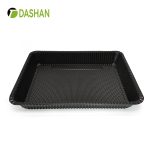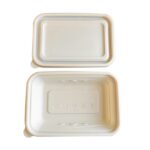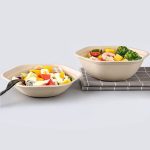Quick Summary:
In 2025, the debate between PLA cups and PET plastic cups becomes a key consideration for businesses. PLA cups, made from renewable plant resources, are compostable and eco-friendly, whereas PET cups, derived from petroleum, are recyclable but have lower recycling rates. This article compares both options based on sustainability, food safety, market trends, and cost to help businesses make informed decisions that align with regulatory compliance and consumer expectations.
Introduction
As businesses continue to adapt to the growing demand for sustainable practices, the packaging industry, especially in foodservice, is experiencing a major shift. Single-use plastic cups, especially those used for cold beverages, are under increasing scrutiny due to their environmental impact. The most common choices in 2025 are PLA (Polylactic Acid) cups and PET (Polyethylene Terephthalate) plastic cups.
While PET cups have been the industry standard for decades due to their durability, clarity, and low cost, the rise of environmental consciousness and stricter regulations are pushing businesses toward PLA cups. Made from renewable plant materials, PLA cups are compostable and a greener alternative to their petroleum-based counterparts.
This article provides a detailed comparison of PLA cups vs PET plastic cups, including key factors like food safety, sustainability, cost, and market trends. Whether you’re a café owner, juice bar operator, or event organizer, understanding the differences between these two options will guide your decision on the best packaging solution for your business in 2025.
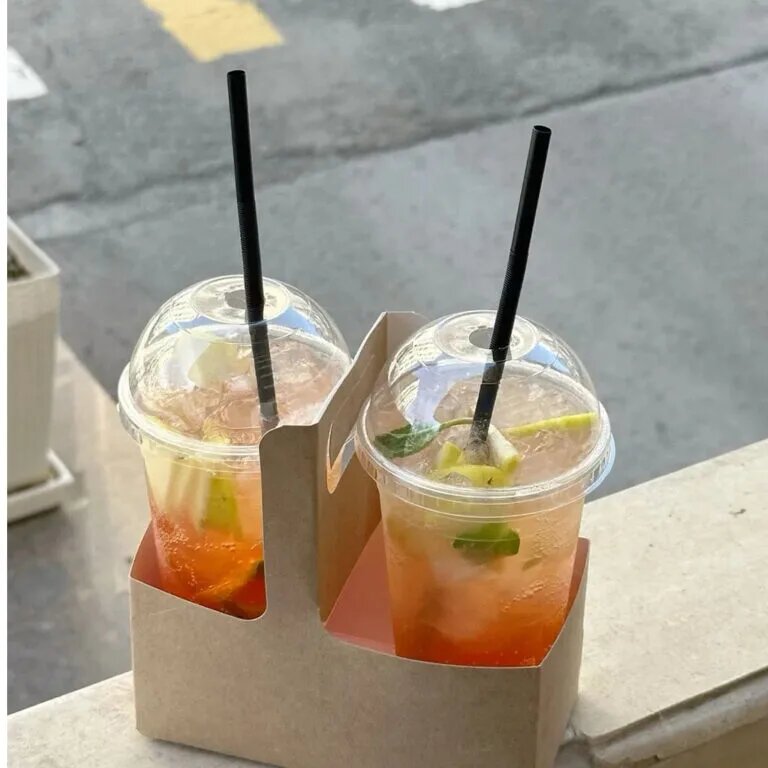
Compostable PLA Cups and Their Uses
What Is a Compostable PLA Cup?
A compostable PLA cold cup is made from polylactic acid (PLA), a biopolymer derived from renewable resources like corn starch, sugarcane, or cassava. Unlike conventional plastic cups made from petroleum, PLA cups are biodegradable and can break down into water, carbon dioxide, and biomass when composted under industrial conditions within 90–180 days.
These cups are clear, lightweight, and provide high-clarity finishes, making them perfect for beverages such as iced coffee, smoothies, bubble tea, and fruit juices. They offer the same aesthetic appeal as PET cups but with the added benefit of environmental friendliness.
What Are Cold Cups and What Are They Used For?
Cold cups are designed specifically for chilled beverages. These include:
-
Iced coffee and iced tea in cafés
-
Fresh juices and smoothies in juice bars
-
Bubble tea and milkshakes in beverage chains
-
Soft drinks, cocktails, and beer at festivals or events
-
Cold water or soda served on airlines
Though PET cups have traditionally been the go-to choice for these beverages, PLA cups are fast becoming the preferred option due to their compostability and regulatory advantages in many markets.
PLA vs PET Cups: A Detailed Comparison
| Feature | PLA Cups (Plant-Based) | PET Cups (Petroleum-Based) | Advantage |
|---|---|---|---|
| Raw Material | Renewable plants (corn, sugarcane) | Fossil fuels | PLA |
| End-of-Life Option | Compostable (EN13432, ASTM D6400) | Recyclable (low rates) | PLA |
| Food Safety | BPA-free, PFAS-free, FDA and EFSA approved | Safe but potential PFAS & microplastic concerns | PLA |
| Heat Resistance | Up to 55–60°C (cold drinks only) | Up to 90°C | PET |
| Transparency | High clarity, slightly softer feel | Very high clarity, rigid | Tie |
| Carbon Footprint (LCA) | Up to 65% lower GHG emissions vs PET | Higher energy demand | PLA |
| Regulation Fit in 2025 | Accepted in plastic ban frameworks | Increasing restrictions | PLA |
| Brand Value | Premium eco-friendly positioning | Cost-efficient but less ESG value | Depends |
Key Differences between PLA and PET Cups
-
Raw Materials: PLA cups are made from renewable plant resources, making them an environmentally sustainable option. In contrast, PET cups are made from petroleum-based plastic, a non-renewable resource.
-
End-of-Life: PLA cups are compostable and break down naturally in industrial composting environments. PET cups, while recyclable, often end up in landfills due to low recycling rates and contamination.
-
Food Safety: PLA cups are free from harmful chemicals such as BPA, PFAS, and phthalates, making them a safer option for food and beverages. PET cups, although safe for food use, can potentially release microplastics or chemicals when exposed to heat or UV light over time.
-
Carbon Footprint: PLA cups have a significantly lower carbon footprint, with up to 65% fewer greenhouse gas emissions compared to PET cups over their life cycle. PET production relies heavily on fossil fuels, contributing to a higher environmental impact.
Life Cycle Assessment (LCA) Insights: PLA vs PET Cups
A Life Cycle Assessment (LCA) reveals the environmental performance of PLA and PET cups, showcasing the significant advantages of PLA cups in terms of sustainability:
-
PLA production emits fewer greenhouse gases, contributing to a lower carbon footprint.
-
PET production, on the other hand, is energy-intensive and has a long-term environmental impact due to its reliance on fossil fuels.
-
PLA cups are industrially compostable, returning to the soil as organic matter, while PET cups often end up in landfills or incinerators.
For businesses looking to enhance their Environmental, Social, and Governance (ESG) score, switching from PET to PLA cups can be a significant step in improving sustainability practices.
Safety and Food Contact of PLA Cups
Is PLA Safe for Cold Drinks?
Yes, PLA cups are FDA-approved, EFSA-compliant, and free from toxic chemicals like BPA and PFAS, making them a safe option for cold beverages. They are widely used for smoothies, iced coffee, bubble tea, and juices.
Is PLA Safe for Long-Term Use?
PLA cups are safe for long-term storage and drinking when used for cold beverages (up to 55–60°C). However, they are not suitable for hot drinks as they may soften or warp at higher temperatures.
End-of-Life: Disposal of PLA vs PET Cups
PLA Cup Disposal
-
Composting: PLA cups break down in industrial composting within 90–180 days, returning to the soil as organic matter.
-
Contamination: PLA cups should not be mixed with PET for recycling, as this disrupts the recycling process.
PET Cup Disposal
-
Recycling: PET cups are technically recyclable, but due to contamination and low collection rates, less than 30% of PET waste is recycled. Most PET cups end up in landfills or incineration.
For businesses pursuing zero-waste strategies, PLA cups offer a more sustainable end-of-life option.
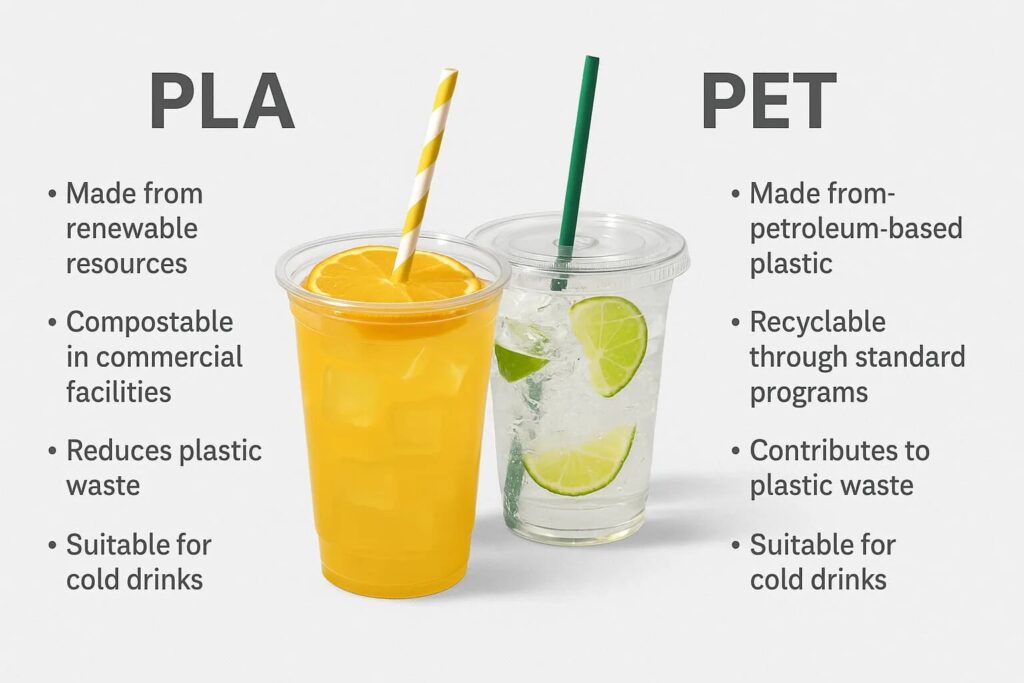
Consumer Perception and Market Trends in 2025
Consumers are increasingly choosing brands that prioritize sustainability. Studies show that 70% of Gen Z and Millennials prefer to buy from brands that use compostable or biodegradable packaging. Moreover, PLA cups are perceived as more environmentally responsible, and customers are willing to pay a premium for products served in sustainable packaging.
Regulatory Compliance for PLA and PET Cups in 2025
As plastic bans increase globally, businesses must consider compliance with local regulations:
-
Europe: The Single-Use Plastics Directive (SUPD) restricts the use of PET, while PLA cups remain acceptable under compostable certifications.
-
United States: Cities like San Francisco and Seattle have already banned non-compostable plastics, making PLA cups a preferred option.
-
Canada: Nationwide bans on single-use plastics are driving the demand for certified compostable packaging.
Business Considerations for PLA and PET Cups
When choosing between PLA and PET cups, businesses should consider:
-
Cost: PET cups are cheaper initially, but PLA cups offer long-term value through better sustainability and regulatory compliance.
-
Customization: Many suppliers offer custom PLA logo cups, allowing businesses to enhance branding while showing their commitment to sustainability.
Conclusion
As the foodservice industry continues to prioritize sustainability, PLA cups are becoming the superior choice for businesses in 2025. While PET cups may still have a place due to their lower initial cost and heat resistance, PLA cups offer greater long-term benefits, including eco-compliance, improved brand perception, and better alignment with global sustainability trends.
Switching to PLA cups is not just a step toward regulatory compliance—it is an investment in your business’s future.
FAQ
1. Are PLA cups safe for cold drinks?
Yes, PLA cups are food-safe and free from harmful chemicals. They are perfect for cold beverages like iced coffee, juices, and smoothies.
2. Can PLA cups hold hot beverages?
No, PLA cups are only suitable for cold drinks. For hot beverages, consider PLA-lined paper cups.
3. How long does it take for PLA cups to decompose?
PLA cups decompose in industrial composting within 90–180 days. They should not be mixed with PET for recycling
References:
-
Sustainability of PLA and PET Packaging
Packaging Strategies: https://www.packagingstrategies.com/articles/12345-sustainability-of-pla-and-pet-packaging -
PLA vs PET: Understanding the Difference for Foodservice Packaging
Eco-Packaging Solutions: https://www.eco-packagingsolutions.com/pla-vs-pet-difference -
The Environmental Impact of PLA Cups
Green Biz: https://www.greenbiz.com/article/environmental-impact-pla-cups -
Plastic Packaging Trends and Regulations in 2025
Plastics News: https://www.plasticsnews.com/plastic-packaging-trends-2025 -
Food Safety and Packaging: How PLA Cups Ensure Consumer Protection
FDA: https://www.fda.gov/food/food-labeling-nutrition/food-safety-packaging-pla-cups

